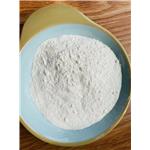May be synthesized from organo-mercury compounds; by dehydrogenation of 3-hexanol in the presence of Ni-zinc oxide-phosphate catalyst; by hydrogenolysis of 2-ethylfuran; by passing
(5-furylpropionic acid (or 2-furanpropionic acid) over 5% Pt-C
catalyst to 250 to 300°C; by two patented processes.
3-Hexanone has an ethereal, grape, wine-like odor
Reported found in coffee and, as a component in the volatile by-product developed during the catalytic hydro�genation of soybean oil using Ni catalysts; in the scent of green vegetable Nezara viridula. Also reported found in lime peel oil, black
currants, peach, pineapple, fried potato, Parmesan cheese, butter, milk, eggs, beef, fried pork, beer, rum, cocoa, coffee, filberts, pas�sion fruit, plumcot, rose apple, mango, lemon balm, crab, Cape gooseberry and sweet grass oil.
3-Hexanone was used in a study to determine Henry′s law coefficients by combination of the equilibrium partitioning in closed systems technique in combination with solid-phase microextraction. It was used as test species in a study for quantitative determination of volatile organic compounds by chemical ionization reaction mass spectrometry. It was used to study the inhibitory activity of some aromatic and aliphatic ketones against Clostridium Botulinum spores and cells.
3-Hexanone can be used as an analytical standard for the determination of the analyte in foods, and alcoholic beverages by liquid chromatography (LC) based methods.
From organo-mercury compounds; by dehydrogenation of 3-hexanol in the presence of Ni-zinc oxide-phosphate catalyst;
by hydrogenolysis of 2-ethylfuran; by passing β-furylpropionic acid (or 2-furanpropionic acid) over 5% Pt-C catalyst from 250 to
300°C; by two patented processes
ChEBI: 3-hexanone is a dialkyl ketone that is hexane in which the two methylene protons at position 3 have been replaced by an oxo group. It has a role as a human urinary metabolite, a human xenobiotic metabolite, an insect attractant, a plant metabolite and a bacterial xenobiotic metabolite. It derives from a hydride of a hexane.
Taste characteristics at 30 ppm: sweet, fruity and waxy with rum notes
Journal of the American Chemical Society, 96, p. 4721, 1974
DOI: 10.1021/ja00821a085The Journal of Organic Chemistry, 45, p. 2269, 1980
Tetrahedron Letters, 11, p. 27, 1970
3-Hexanone, a volatile dialkyl ketone, is a well-known flavor and aroma ingredient present in food and beverage products.
Toxic by ingestion and inhalation, strong
irritant. Flammable, moderate fire risk.



